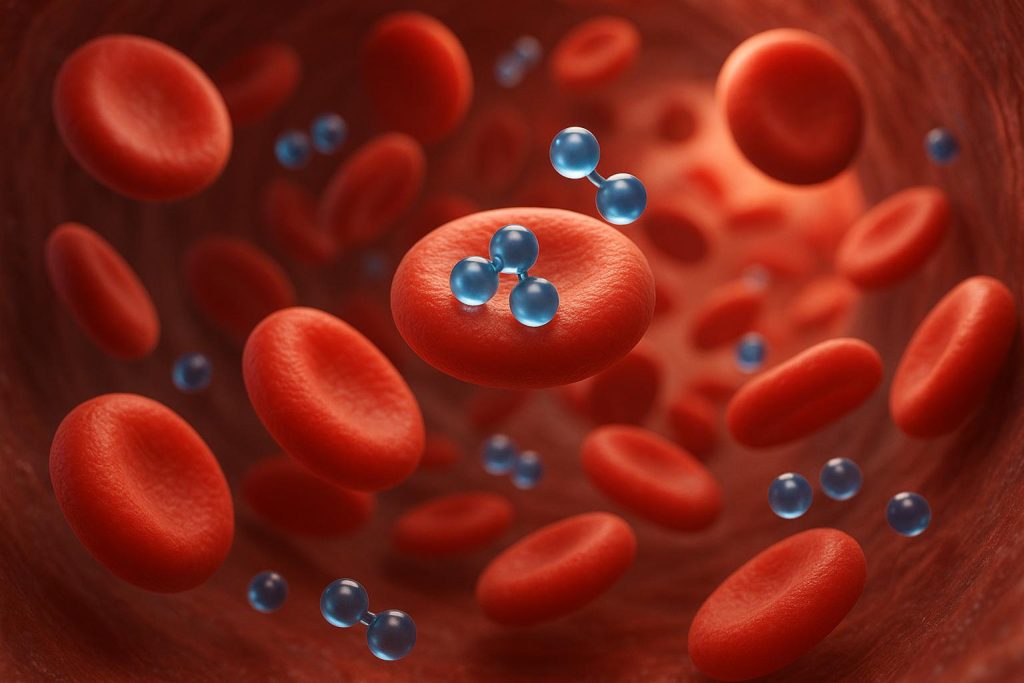If your blood oxygen drops when you walk, it usually means your lungs or heart aren’t delivering enough oxygen to your body during movement. This can signal a serious medical issue like chronic lung disease, heart problems, or other conditions affecting oxygen delivery. Understanding this phenomenon is crucial for your health because low oxygen—also called hypoxemia—can affect your energy, organ function, and quality of life. In this guide, you’ll discover the main causes, symptoms, diagnosis methods, and actionable steps you can take if your blood oxygen drops with activity. See the Mayo Clinic’s official resource on low blood oxygen.

What Is Blood Oxygen and Why Is It Important?
- Blood oxygen (SpO₂) measures how much oxygen your red blood cells carry.
- Normal SpO₂ for adults is 95%–100%. Readings below 90% are considered low and may need urgent attention (Cleveland Clinic, 2024).
- Oxygen powers every cell in your body, especially during physical activity, making it vital for overall health.
Main Reasons Why Blood Oxygen Drops When Walking
1. Chronic Lung Conditions
- COPD: Chronic Obstructive Pulmonary Disease blocks airflow, making it hard to absorb enough oxygen.
- Interstitial Lung Disease (ILD): Scarring stiffens the lungs, reducing oxygen transfer.
- Asthma: Narrowed airways restrict oxygen flow, especially with exertion.
- Pneumonia, COVID-19, or other infections also lower oxygen uptake during movement.
Fact: Up to 62% of COPD patients experience a significant drop in oxygen during a six-minute walk (NCBI, 2022).
2. Heart Conditions
- Heart failure: The heart can’t pump oxygen-rich blood effectively.
- Arrhythmias: Irregular heartbeats may disrupt oxygen delivery during physical activity.
3. Circulatory & Blood Disorders
- Anemia: Fewer red blood cells mean less oxygen transport.
- Peripheral artery disease: Reduced blood flow to the limbs affects oxygen delivery.
4. Obesity and Physical Deconditioning
- Excess weight or poor fitness can cause shortness of breath and lower oxygen, even with mild exercise.
5. Other Factors
- Rapid movement: Blood travels faster through the lungs, reducing oxygen pickup time (Wikipedia).
- High altitudes: Less oxygen in the air can cause drops during exertion.
Common Symptoms When Oxygen Drops with Walking
- Shortness of breath (dyspnea)
- Fatigue or weakness
- Chest discomfort or palpitations
- Dizziness or lightheadedness
- Blue lips or fingertips (cyanosis)
- Confusion, especially in older adults
Tip: If your SpO₂ drops below 88–90% during activity, contact a healthcare provider right away (American Lung Association, 2024).
How Doctors Diagnose Low Oxygen During Activity
1. Pulse Oximetry
- A fingertip device measures SpO₂ in real time, including during walking tests.
2. Six-Minute Walk Test (6MWT)
- Measures how your oxygen levels respond to light activity.
- Helps determine if supplemental oxygen is needed (NIH, 2024).
3. Further Testing
- Blood tests: Check for anemia or infections.
- Spirometry and imaging: Evaluate lung and heart structure/function.
What To Do If Your Blood Oxygen Drops When Walking
- Stop and rest immediately if you feel breathless or dizzy.
- Monitor with a home pulse oximeter as advised by your doctor.
- Keep a symptom diary and share changes with your healthcare provider.
- Don’t ignore oxygen drops below 90%—seek urgent medical advice.
Treatment and Prevention Options
1. Manage Underlying Conditions
- Use inhalers or medication for lung disease.
- Treat heart issues or anemia as directed by your doctor.
2. Supplemental Oxygen
- Prescribed if SpO₂ frequently drops below safe levels.
3. Pulmonary Rehabilitation
- A supervised program combining exercise, education, and breathing techniques.
4. Lifestyle Adjustments
- Maintain a healthy weight.
- Stay active (as advised).
- Avoid smoking and environmental pollutants.
Frequently Asked Questions (FAQ)
Q: Can anxiety cause low oxygen when walking?
A: Anxiety may cause hyperventilation or panic, but does not usually cause true hypoxemia.
Q: Should I buy a pulse oximeter for home?
A: If you have chronic lung or heart issues, a pulse oximeter can help track your oxygen—ask your doctor before starting.
Q: Is it normal for athletes to have lower oxygen when exercising?
A: Well-trained endurance athletes may have very mild desaturation with intense exertion due to fast blood flow, but it’s rare to see dangerous drops in healthy people (Frontiers in Sports, 2021).
When to Seek Immediate Help
- Have oxygen readings below 88% at rest or with mild activity.
- Experience chest pain, confusion, or severe shortness of breath.
- Notice symptoms worsening rapidly.
Conclusion
If your blood oxygen drops when you walk, it’s a sign to talk to your doctor right away. Don’t ignore ongoing symptoms. Early diagnosis and treatment can improve your energy, comfort, and quality of life.
Take action: Schedule a checkup, track your symptoms, and follow your provider’s advice for a safer, more active life!
